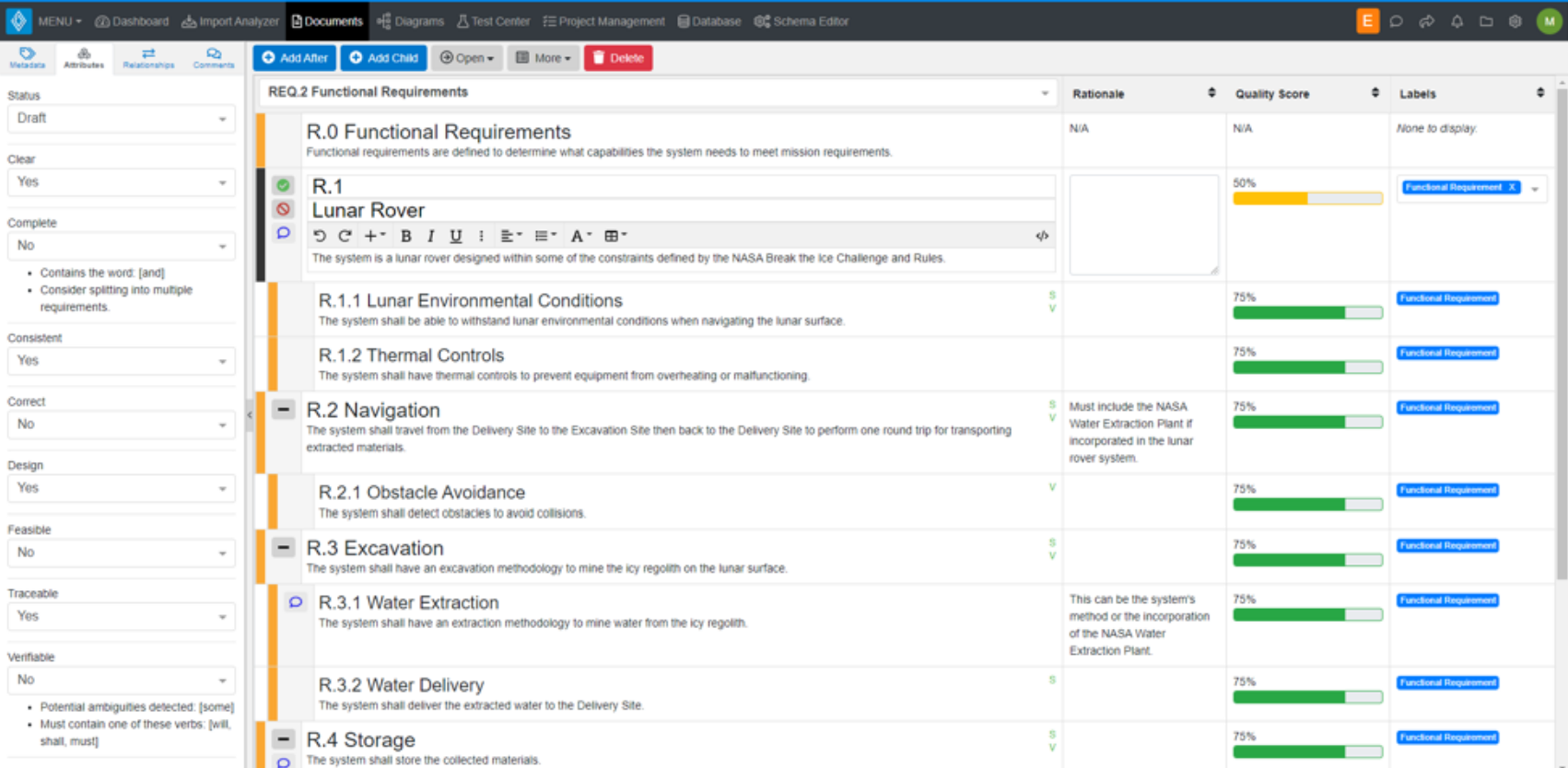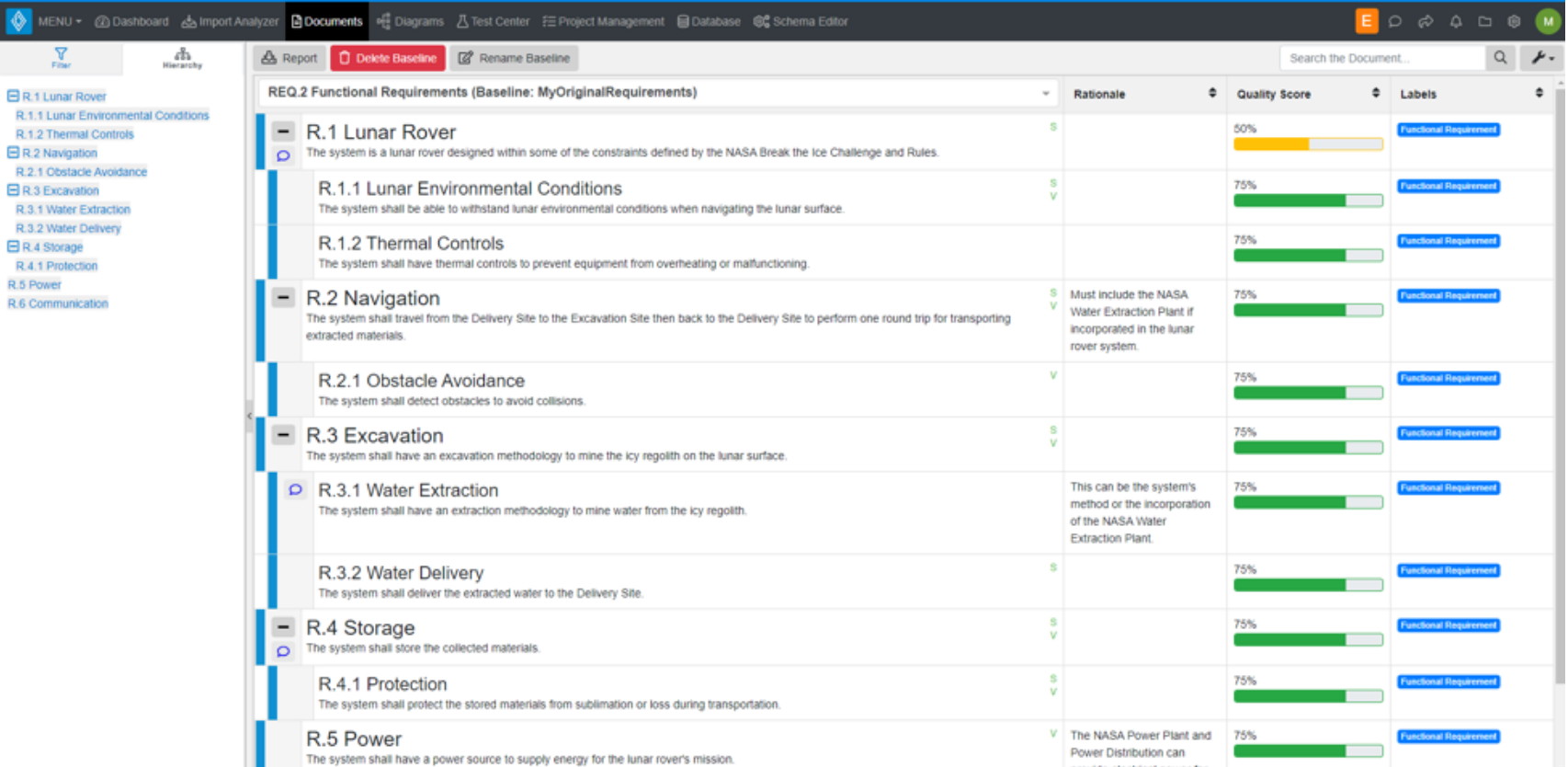8 Ways to Manage Unrealistic Stakeholder Expectations
Unrealistic expectations from requirements management stakeholders can pose significant challenges to a project. However, addressing these...
.jpeg)
Systems engineering is not just writing requirements or conducting a requirements analysis. Systems engineering processes take stakeholder needs and create products or systems to support those needs. The requirements management process is one step in this lifecycle development; they are not the sole process that drives the project from A to B.
When producing requirements from stakeholder goals and customer needs, a systems engineer must consider the entirety of the lifecycle model with systems design in mind. How will these requirements support model development and execution? How will these requirements encourage verification and validation of the product system? How will these requirements change and evolve through agile cycles? How will other fields use these requirements to support their processes?
Related Article: Plan Verification and Validation Early in the Lifecycle
These questions promote systems thinking when producing requirements. Systems engineers specialize in this ability to look at the big picture and not just pump out requirements that have no purpose or connection to the lifecycle. Requirements are also not a one-and-done production. They must be reviewed and revised; they must collaborate with input from all fields supporting the system to be designed.
The model-based systems engineering tool, Innoslate, simplifies these problems with its requirements analysis capabilities. In Innoslate, a requirements document can be produced collaboratively and in real-time using cloud computing. Comments can also be added to enable conversations or review implementation. The figure below displays functional requirements written for a lunar rover prototype. The comment describes the reasoning for the lunar rover design and development.

The heuristic-driven Requirements Quality Checker can also be run on these requirements to help systems engineers understand how they can improve the grammatical structure of each of their requirements. There are eight attributes each requirement is scored against: Clear, Complete, Consistent, Correct, Design, Feasible, Traceable, and Verifiable. The figure above displays a requirement, R.1 Lunar Rover, that needs revision.
Once finished producing an agile cycle of the requirements, the document may be baselined and returned to each agile cycle throughout the project.

Requirements can be traced throughout a project using various relationships. Key relationships might include satisfying the requirements with actions, verifying the requirements with test cases, or tracing the requirements to other requirements just to name a few possibilities. These relationships can be confirmed by opening a Traceability Matrix. The figure below displays all the test cases by which the requirements are verified.

Innoslate supports the development of data-driven requirements through collaboration, quality checking, and baselines to preserve requirement versions. This ensures that stakeholder needs will be met by creating thorough requirements.
Discover how Innoslate can revolutionize your project management and requirements analysis. Get started with Innoslate today and unlock the potential of your team's productivity. Schedule a live tour now!
Have questions about model-based systems engineering or requirements management? Talk to an expert and see how Innoslate can streamline your projects from start to finish.

Unrealistic expectations from requirements management stakeholders can pose significant challenges to a project. However, addressing these...

The success of project management hinges greatly on effective requirements management, which entails the identification, documentation, and control...

Validation is concerned with whether the system fulfills its intended purpose and meets the user’s requirements. It answers the question: "Are we...